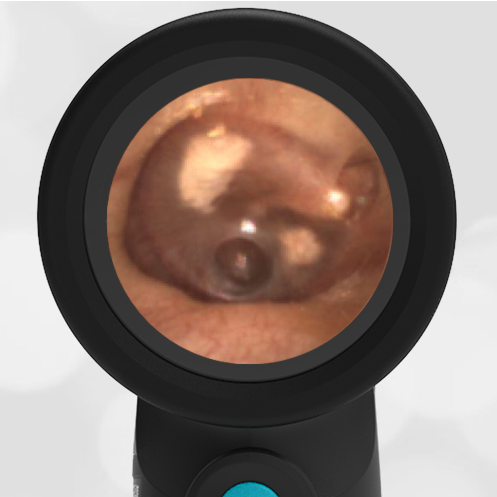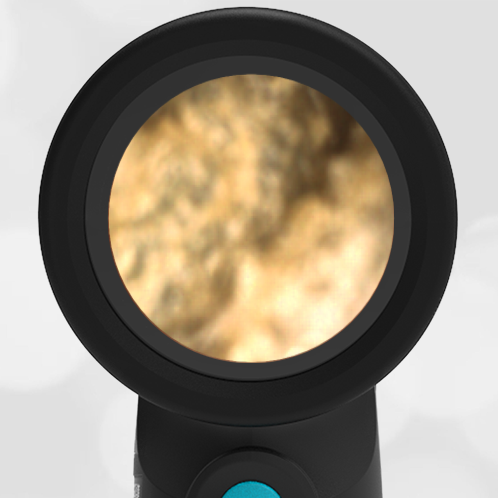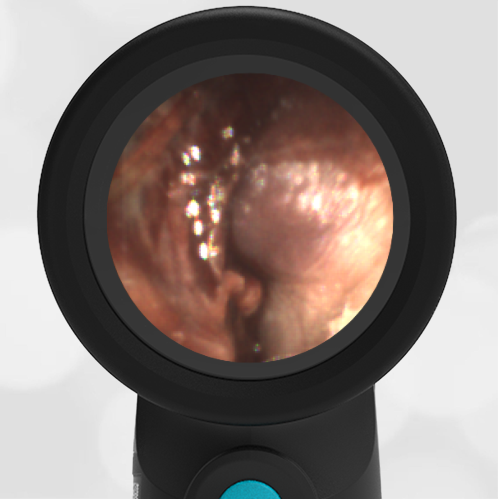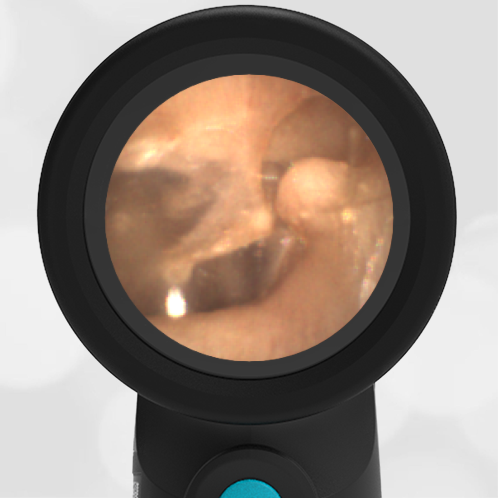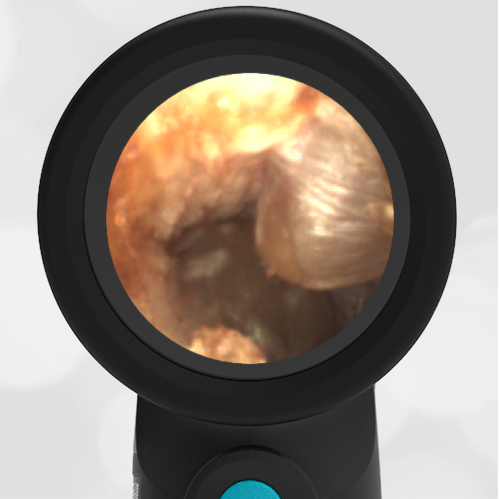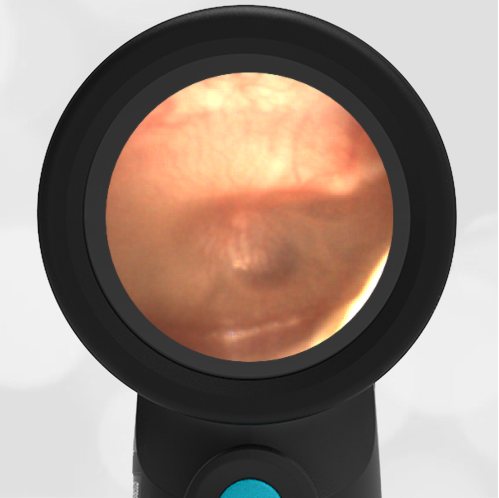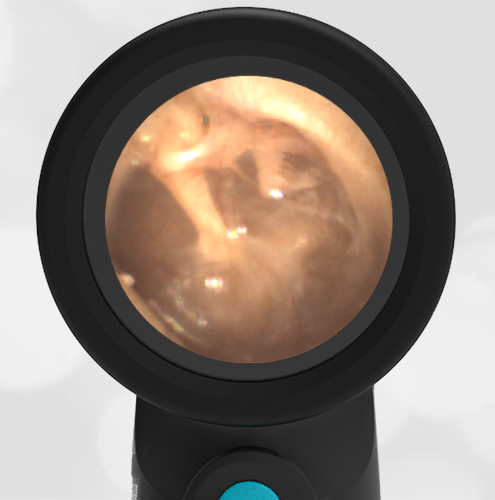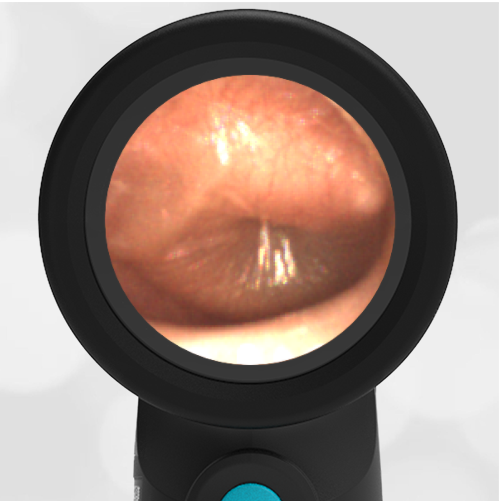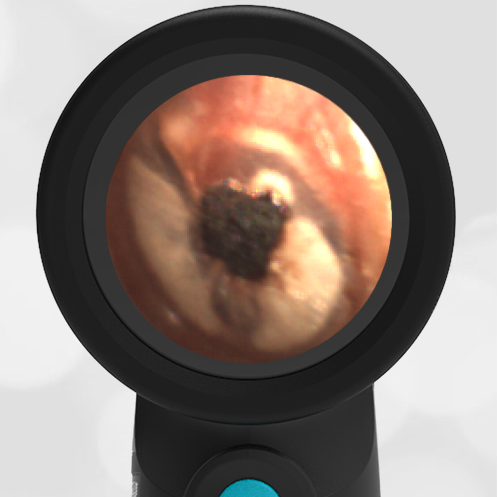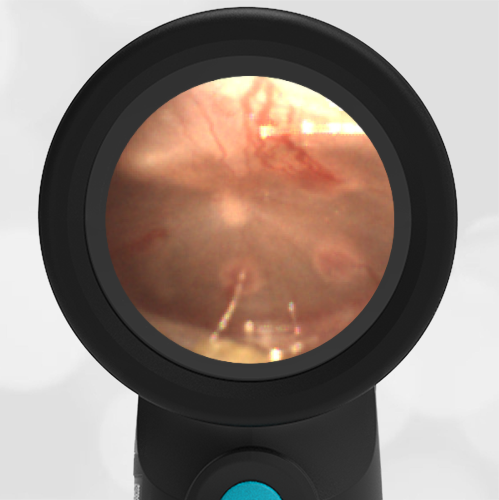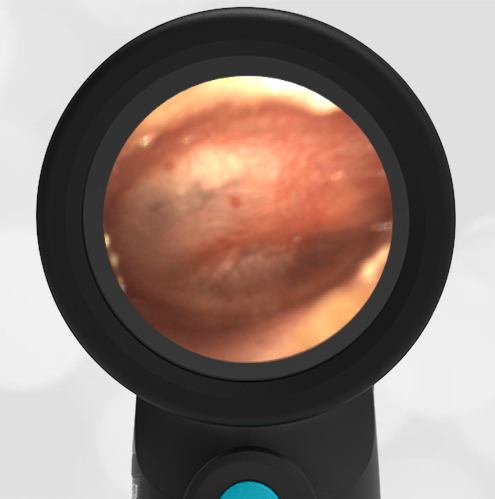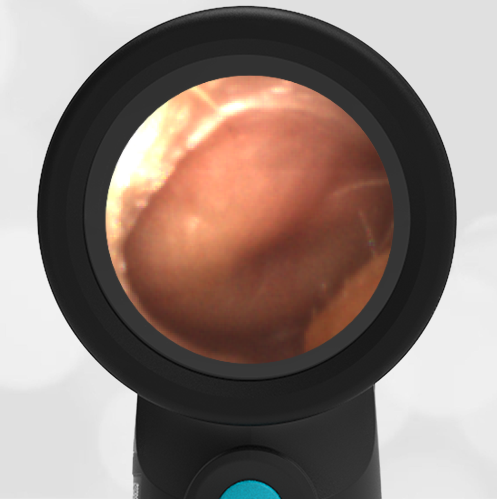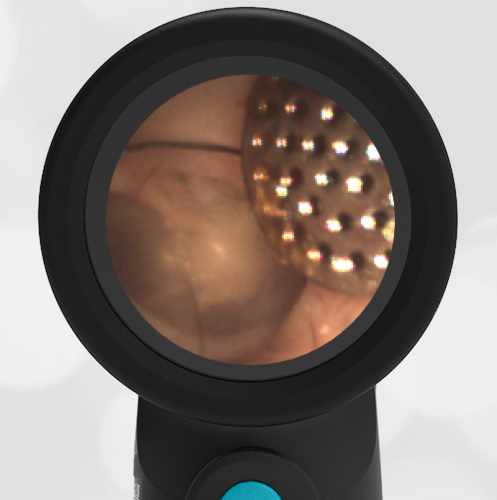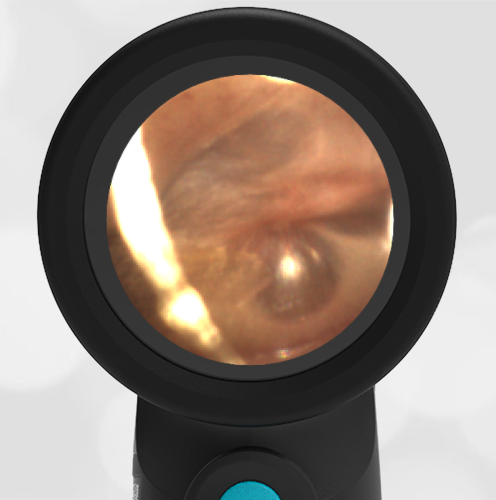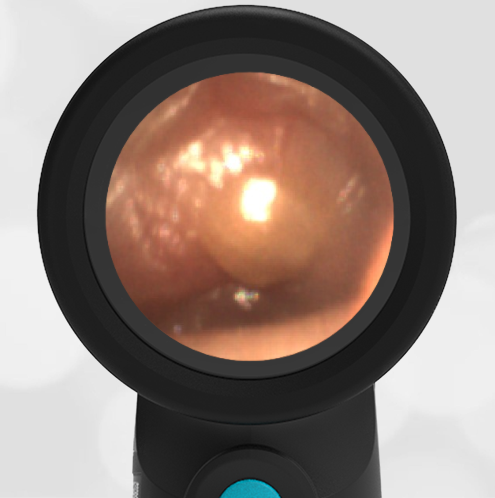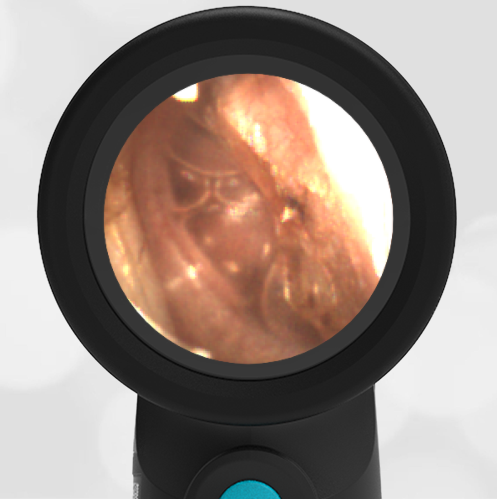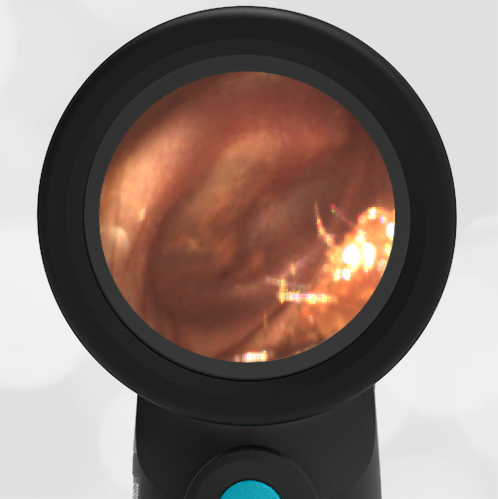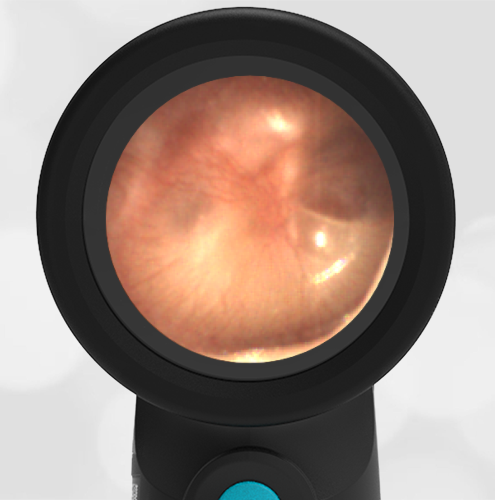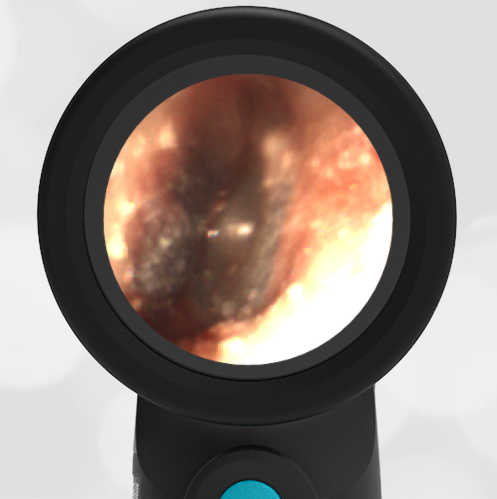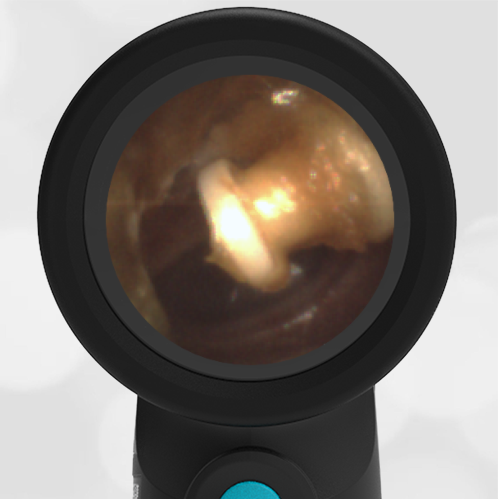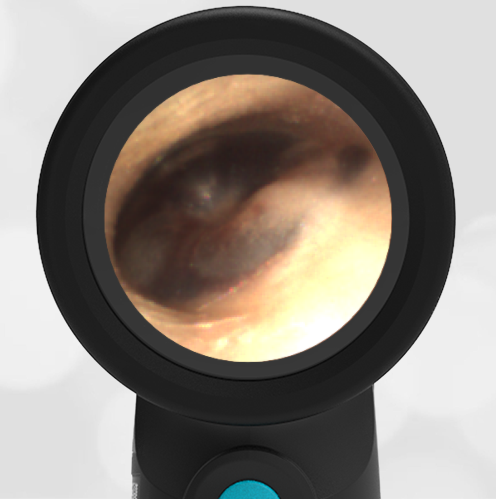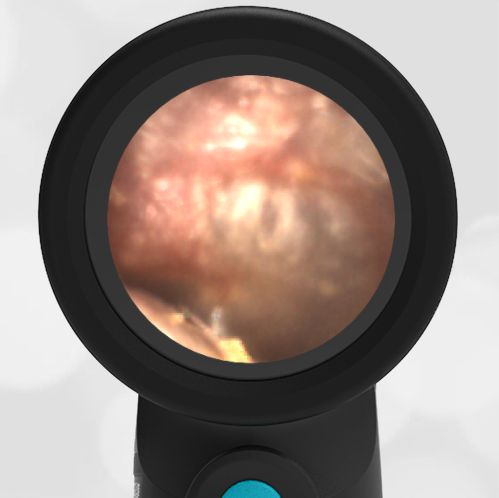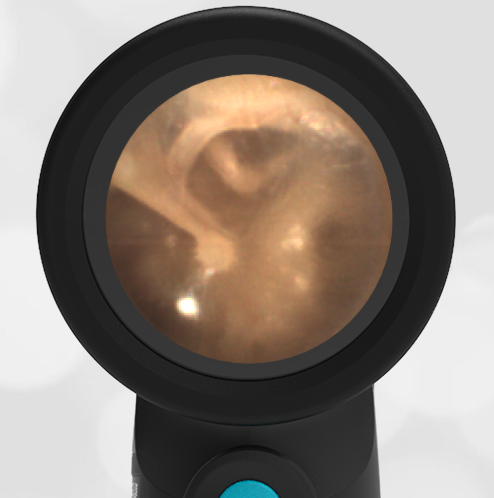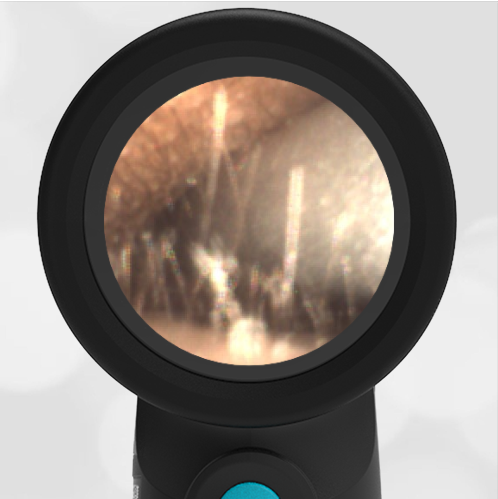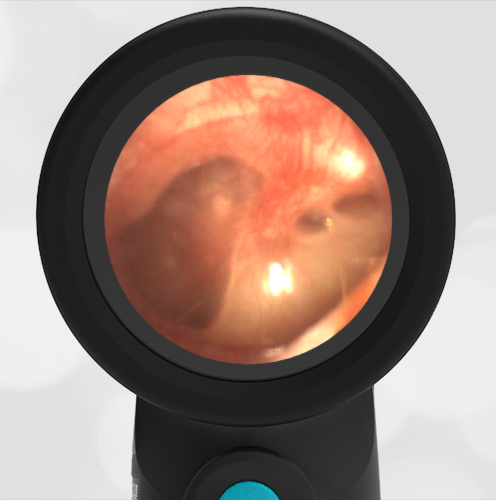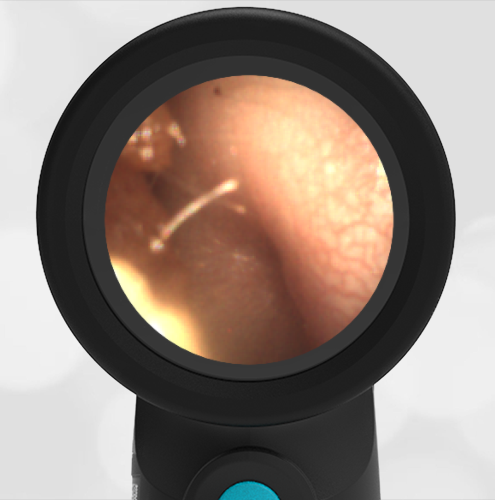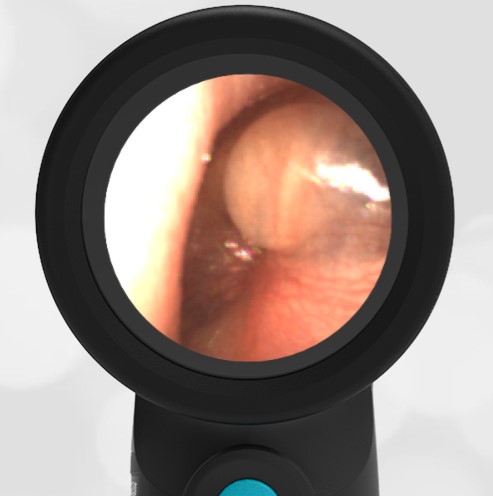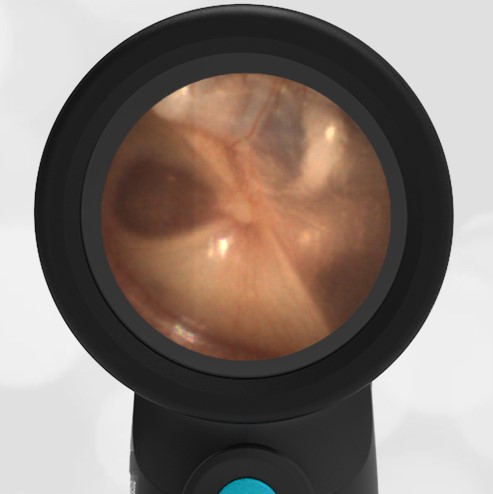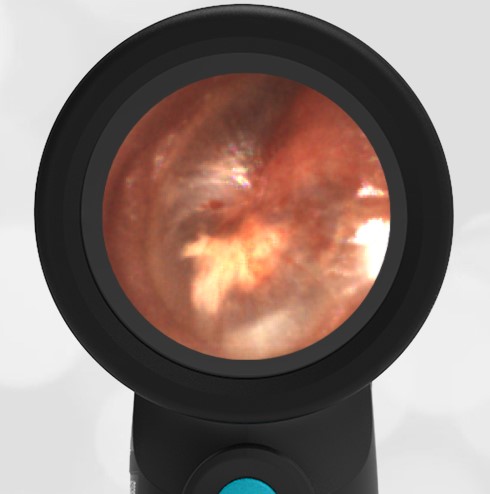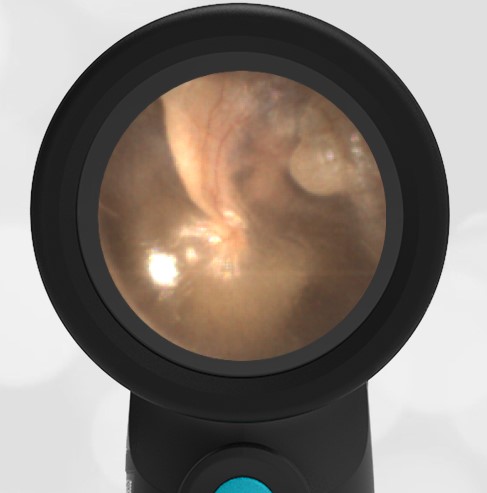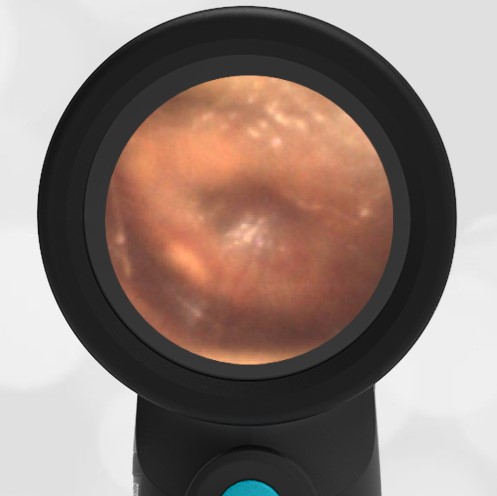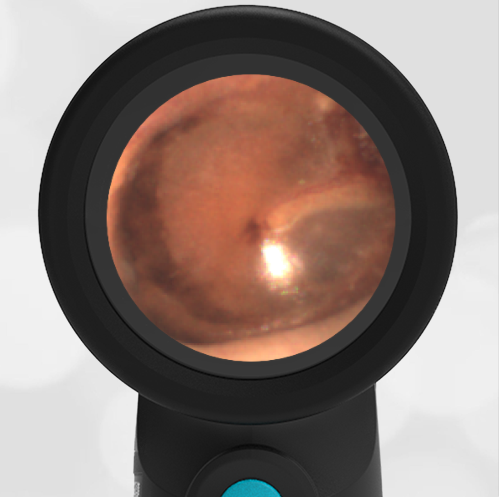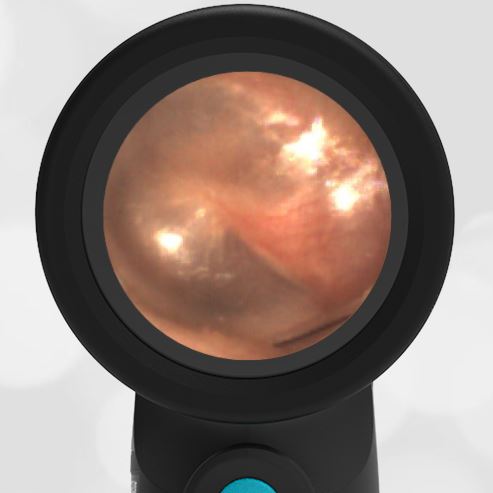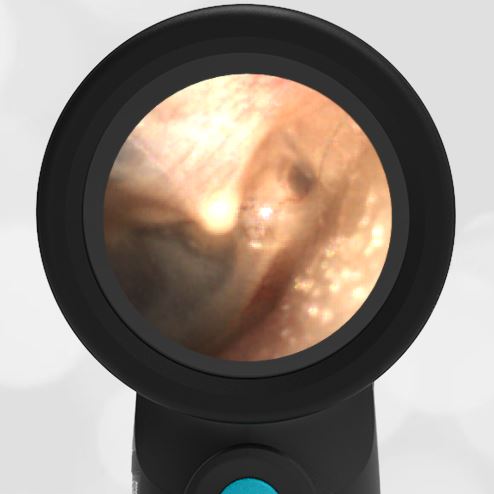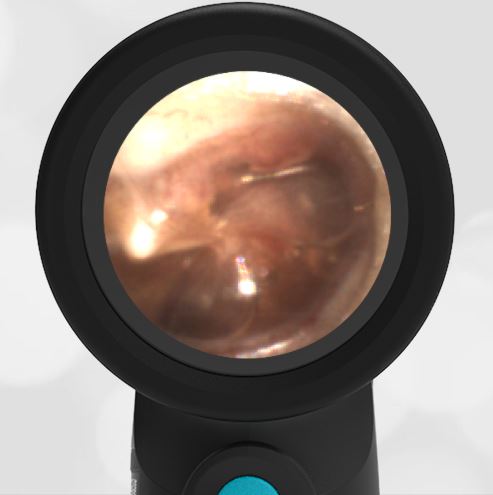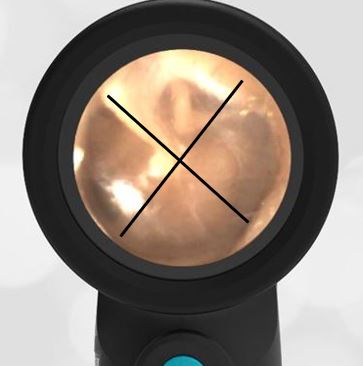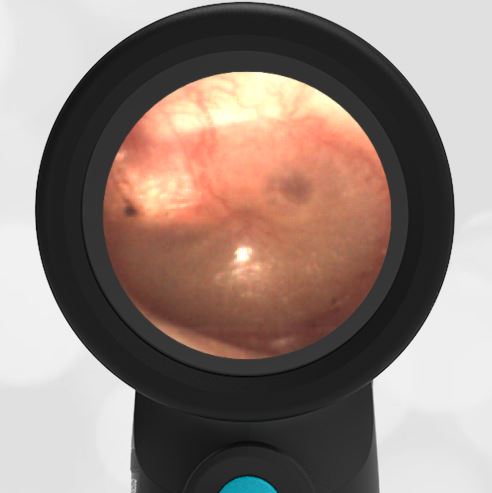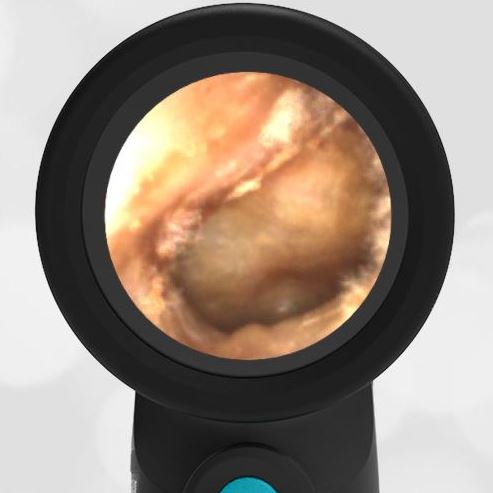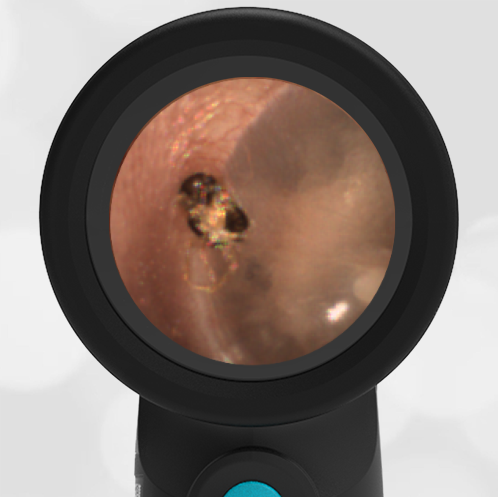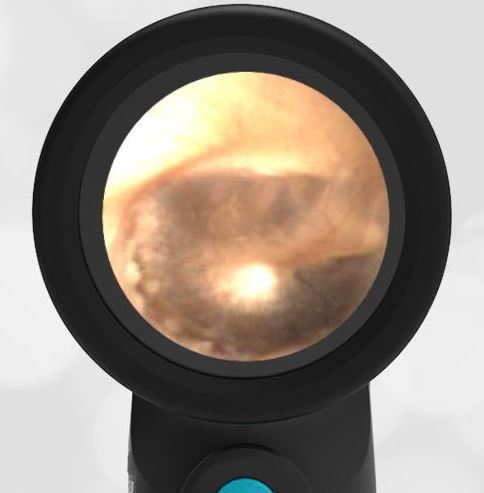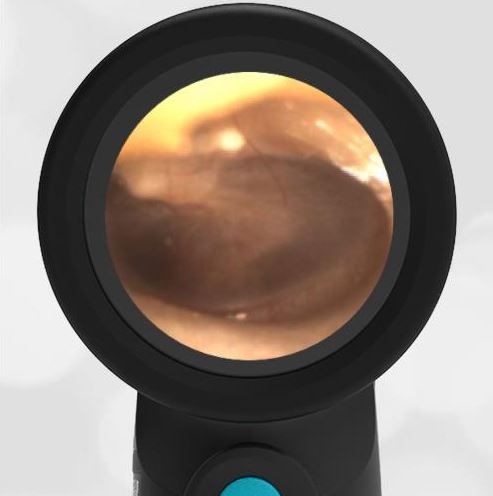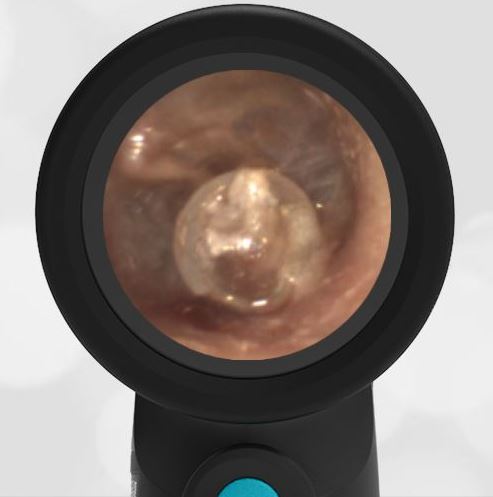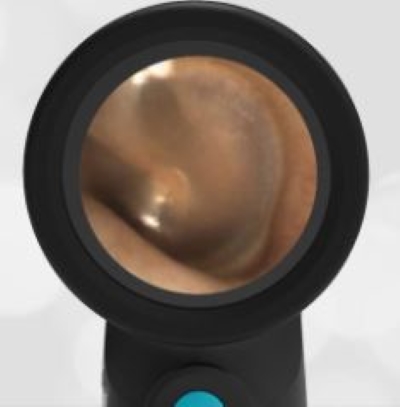
Acute Otitis Media with Penicillin Allergy – July 11, 2024
A 6-year-old presents to the emergency department (ED) with fever and ear pain. Her parents report she has had a runny nose and a subjective fever for the past two days. The child began complaining of ear pain earlier in the day but seemed to improve with ibuprofen. However, she awoke that evening with more severe pain and “was burning up,” so she was brought in for evaluation. Her past medical history is significant for recurrent urinary tract infections (UTIs). She has an allergy to Augmentin which has given her hives when taken for UTIs. In the ED, she has a temperature of 39.2o C and is in obvious distress, holding her right ear. Her Wispr digital exam is posted below.
In addition to providing pain control and antipyretic, which of the following is the most appropriate management?
- Amoxicillin
- Ceftriaxone
- Watchful waiting
- Cefdinir
Answer: D. Cefdinir

This child has acute otitis media (AOM) as evidenced by the moderate to severe bulging demonstrated on her Wispr exam. Due to bulging, the bony landmarks of the inner ear are not visible. Given the height of her fever, she can be classified as severe AOM. Accordingly, she should be offered antibiotics for treatment. While high-dose amoxicillin remains the first-line treatment for AOM, alternative therapy is warranted given her history of allergic reaction to amoxicillin. In penicillin-allergic children, cross-reactivity with cephalosporins is significantly lower than the 10% historically reported. In particular, 2nd and 3rd generation cephalosporins have chemical structures that are different enough from penicillin such that the clinically important allergic reaction rate is likely less than 1%. Therefore, both ceftriaxone (intramuscular or IV) and cefdinir would be options for therapy in the child’s scenario. Since this child does not have recurrent AOM, has not been vomiting, and has presumably tolerated oral antibiotics in the past, cefdinir is the most appropriate choice for management.
References to the key action statements from AAP Practice Parameter (Lieberthal et al) in this case:
Clinicians should diagnose acute otitis media (AOM) in children who present with moderate to severe bulging of the tympanic membrane (TM) or new onset of otorrhea not due to acute otitis externa. Evidence Quality: Grade B. Strength: Recommendation.
The management of AOM should include an assessment of pain. If pain is present, the clinician should recommend treatment to reduce pain. Evidence Quality: Grade B. Strength: Strong Recommendation.
Severe AOM: The clinician should prescribe antibiotic therapy for AOM (bilateral or unilateral) in children 6 months and older with severe signs or symptoms (ie, moderate or severe otalgia or otalgia for at least 48 hours or temperature 39°C [102.2°F] or higher). Evidence Quality: Grade B. Strength: Strong Recommendation.
Here is the complete video exam
Additional Reference:


